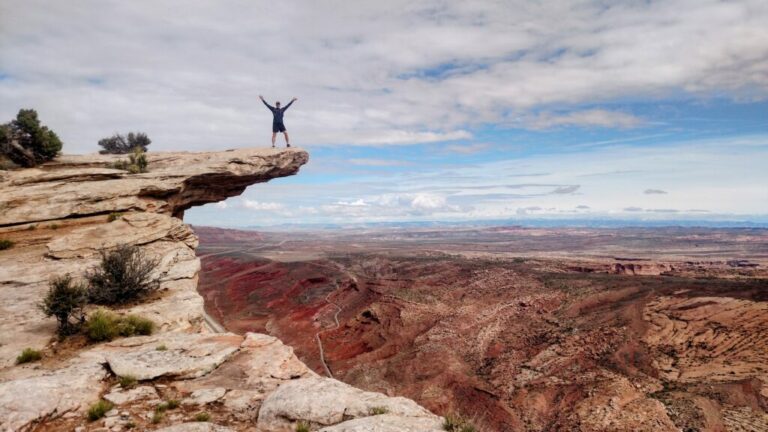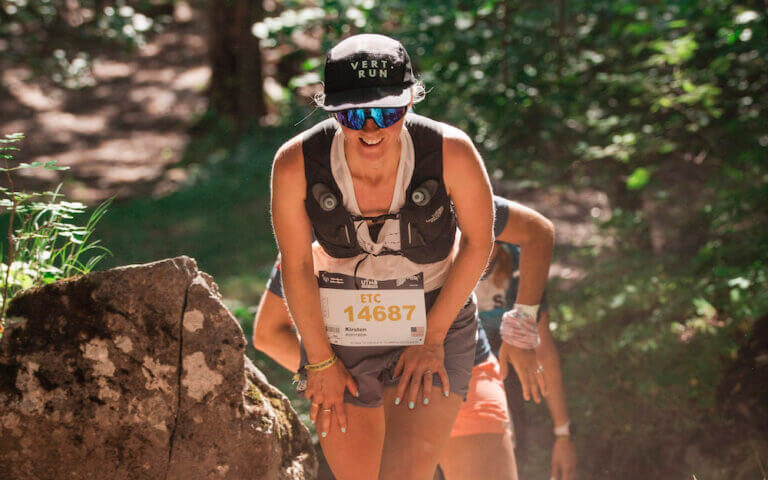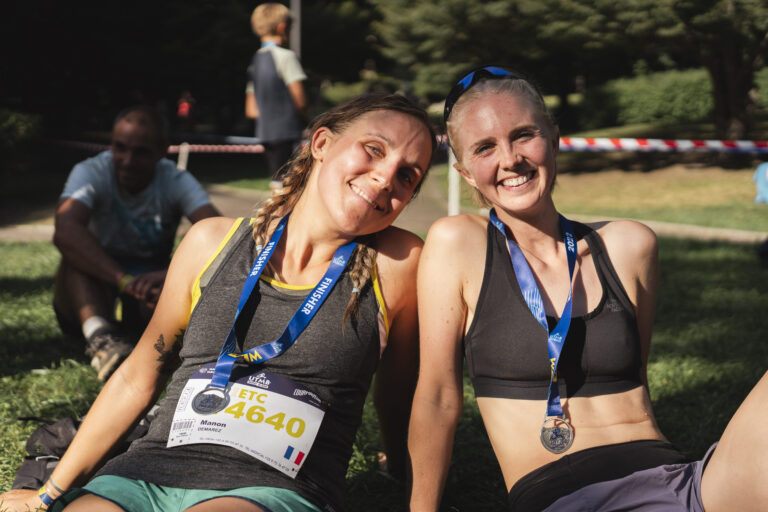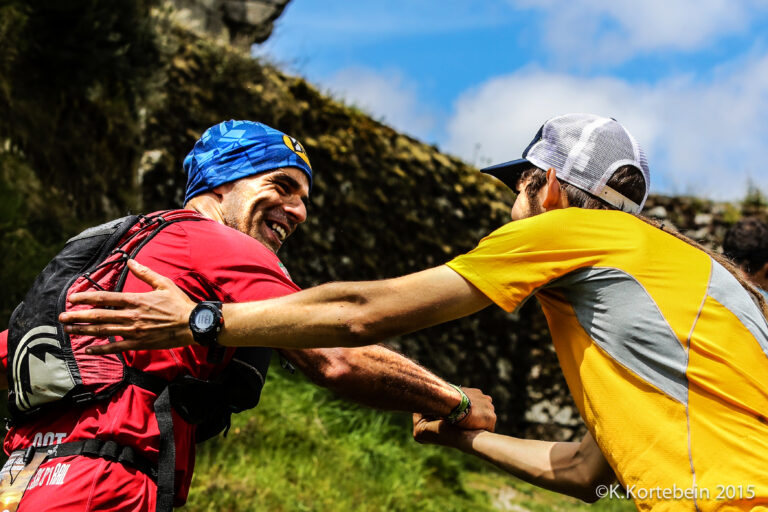Hey, Vert.run community (and trail runners everywhere)! We know that lots of you have heard of the famous Dipsea Race that happens in Marin County, California in the USA…and we thought we’d get to the bottom of what makes this race so special (and so addicting.)
To do that for you, we called up professional trail runner Alex Varner who’s not only an awesome athlete, but also a good friend of our Vert.run founders. Alex has been kind enough to walk us through some Dipsea training tips today and what it’s been like for him to run the race in the past.
The format of this article is a transcript of an interview that our co-founder Kirsten did with Alex.
Full disclosure: Kirsten DID NOT KNOW much about Dipsea before this call with Alex (as you’ll see in this interview, haha) which is actually great for any of you who are also Dipsea-clueless. Enjoy!
Kirsten: So Alex, can you start off just by introducing yourself?
Alex: Sure. I’m Alex Varner. I live locally in Mill Valley, CA, actually on the Dipsea trail–lucky enough. I’ve run the race every year, except once, since 2003, but it’s never gotten any easier.
Kirsten: So how many times have you run it then?
Alex: I want to say 17.
Kirsten: 17? Are you kidding?!
Alex: I think so! I don’t want to count right now, it just makes me feel old at this point.
Kirsten: Wow, what was the hardest one for you? Or are they all hard?
Alex: I think I remember the first one the most because I was in the Runner section versus the Invite section so I was surrounded by about 1500 runners instead of only 700 when you get to start with the Invite runners. I also remember the two years where I finished in second place by a combined 35 seconds. I remember those two and other than that a lot of it is a blur.
Kirsten: What drove you to do the Dipsea race for the first time?
Alex: I went to high school locally in Marin County which is nearby the race and my high school coach suggested it to me. I was running track my senior year of high school to get ready to run in college and he was like, “Hey, there’s this race.”
He made it seem super low key and I had never even heard of the thing. My parents aren’t endurance athletes, they played sports, but mostly things like tennis, and my mom was a ballet dancer for 40 years. So, it wasn’t on the endurance side of things.
After my coach brought it up, I thought, sure, that sounds like fun–why not? So, I signed up. I think it was a lot easier to get in 20 years ago. But I also think they like younger local kids running it. That year I got in and ran it in basketball shorts during my senior year of high school.
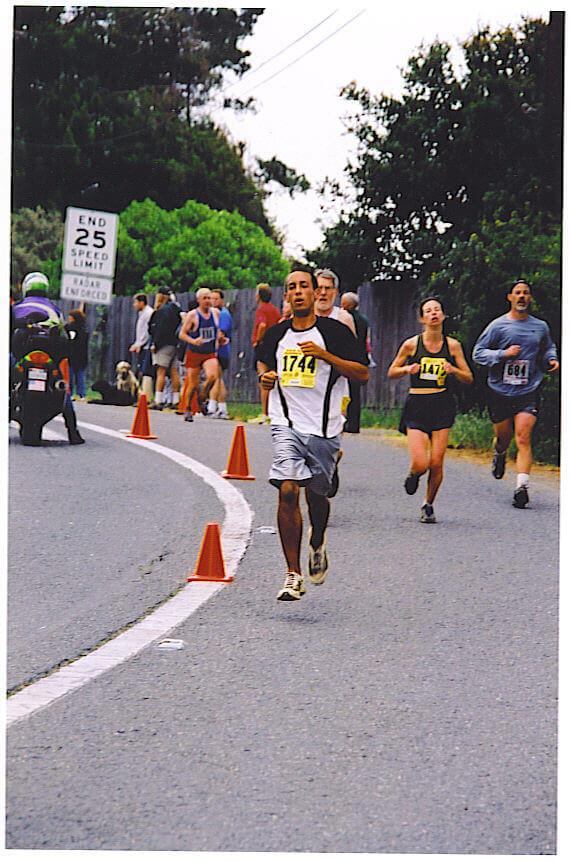
Kirsten: Did any of your friends do it with you or were your friends asking what are you doing, man?
Alex: I had a couple of friends who did it with me. One of them was Liz Gil, who now runs Runcation Travel. Liz and I went to high school together and her mom, who’s now passed away, unfortunately, coached us in track.
There was another woman, my friend Nikki, who ran at a neighboring high school, and two other guys who I ran against in high school at neighboring schools as well. I actually have a physical photograph somewhere of the five of us at the finish line together in our shirts. I definitely wasn’t the only person who thought it would be a good idea to run the race.
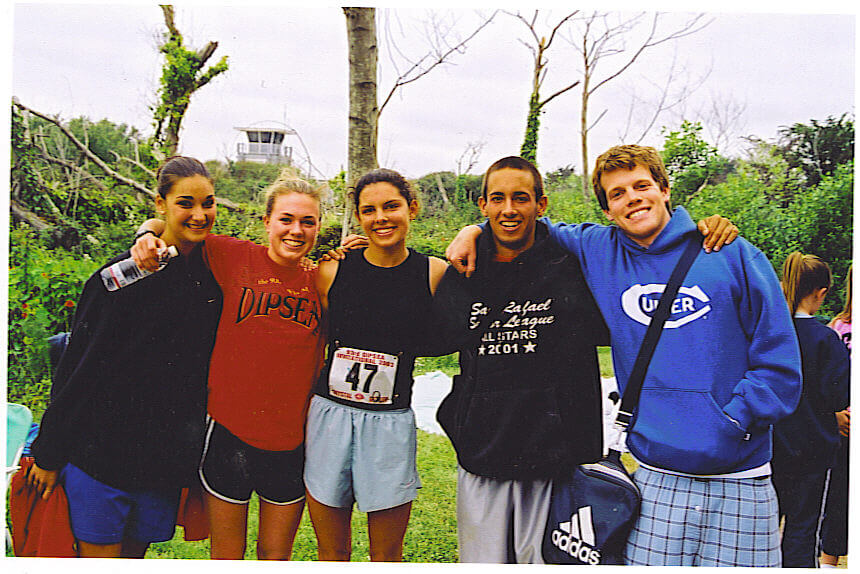
Kirsten: How old were you when you ran it for the first time then?
Alex: I was 17. The youngest finisher ever was five or six years old. Kids start the race, but I don’t know if that’s a great idea. The concept of my daughter running the race is outlandish.
Kirsten: It would probably be helpful for anybody reading or listening to this who doesn’t know much about Dipsea – can you set the scene for me? What’s the vibe like? How long does it take? How does it feel? How many people do it?
Alex: Dipsea is the oldest trail race in the United States, and the second oldest race overall behind the Boston Marathon. They limited entry to about 1,500 people likely due to permitting issues, nowadays.
The race goes through three or four different land management tracks, and it runs through Muir Woods which is a national monument.
The race is split into two sections–there is the Runner section and the Invitational section. The Runner section is generally for first timers, or people who have kind of run the race, gone away, and come back.
The Invitational section–you have to qualify for. The Invitational section takes the top half of the prior year’s Invitational section, and the top half of the previous year’s Runner section and the race is staggered by age and gender.
Kirsten: Right, I know that the Dipsea handicaps are a pretty well-known thing.
Alex: Yeah. The Dipsea handicaps are done by some guy from MIT, who loves the race and loves to figure this out. The idea is that everybody on the start line has an equal chance of winning it. Realistically, the way it’s come out is there are a few people who have a much better chance. In the past, the race has favored 50 to 60 year old men and women who were very high on the national level and the younger guys, like what I used to be. This year, Eddie Owens won it, he was 28.
In 2022, they rejiggered the handicaps for the first time because they were tired of older people winning and then Eddie won. Basically, you have to be really fast for your age group to have a shot to win and some age groups are favored by the handicap more so than others.
The starting order begins with eighty years and above and kids about seven years and younger, and then it slowly gets faster and faster and younger and younger until “scratch,” which is zero head start minutes, and everybody else is considered handicapped. So, “scratch” is the prime age man.
The idea is that the faster people start more towards the back and that the handicaps give everybody a chance. The overall winner is whoever breaks the tape at the finish line. Groups go off every minute and you’re just out on the course trying to pass as many people as you can.
Kirsten: What is the vibe like in general? Do a lot of people come out to cheer or can you not really cheer on stairs?
Alex: It’s a fantastic vibe. It’s super fun. The start line is in downtown Mill Valley, so there’s usually people four or five deep right in the first 30 meters or so. Then, the course runs up one of the main streets through the park, and there’s people cheering all the way up.
The stairs are super narrow so there are no spectators there, but you’ll run into some hikers who didn’t realize there was a race going on. When you come into Stinson Beach at the finish, and you’re on the last half mile or so on road, that’s pretty well spectated.
The last straightaway is usually three or four people deep for about 200 meters all the way to the finish line.
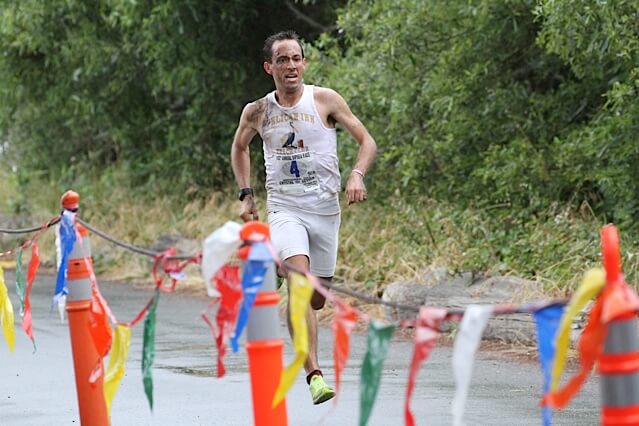
Kirsten: That’s awesome. How long does this race typically take for you?
Alex: The course guides say the route is about 7.4 miles, but my watch has never registered more than about 7 miles. There are shortcuts that are allowed and some of them have become consensus routes that everybody takes. There are others, some of my friends, who are very secretive about their shortcuts. For example, a day before the race one of my friends who’s about 75 years old will disappear off into certain parts of the course with gloves and a ladder.
If you are in the top 35 finishers, you get an extra large black T-shirt with a big silver number on the back. It’s fun, at the post race awards, they call everybody up and you put it on backwards to show off your number and get acknowledged by the crowds. To get a black shirt and into the top 35, it generally takes about 60 to 63 minutes total time. A good goal for a middle aged male runner is if you could run your age, for example 55 minutes for a 55 year old man.
Kirsten: That’s a cool way to think about it.
Alex: Yeah. There’s like a window there where men and women between the age of 50 and 60 have a good shot to win if they can run their age plus about 3 minutes.
Kirsten: We also have some really good questions from the Vert.run community for you.
One of the best questions comes from Leo Pershall who’s one of our Vert.run ambassadors.
Leo lives in San Francisco and works at San Francisco Running Company. He has a lot of great, specific questions. His first question was,
“Dipsea is pretty tough because of all the stairs and roots. How do you think someone should train for that sort of thing if they don’t have access to that type of trail to train on?”
Alex: You can find stairs anywhere, especially if you live in San Francisco, but I think one of the most challenging aspects of the stairs is not knowing where the crowds will be on race day and getting to sections of the stairs that are too crowded with other runners that you cannot run.
That’s the hardest part of the race to train for because you can’t replicate that except on race day. That’s where consistently running the race helps. As the terrain goes, running up and down stairs is a great way to train for those stairs in the race. In my opinion, they can’t make your race but they can break it.
I know a lot of people go charging up the stairs super hard and it just takes everything out of them and that’s not even a mile into the race. It’s really easy to blow yourself up there as far as the other terrain parts go.
One of the downsides to this race is that it’s very terrain specific. I’ve had success in this race and on this course because I am able to train on the route. It’s very hard to do really, really well, say top four or five without having been on the course at least a couple of times.
Kirsten: What percent of the course is stairs? What percent is trail and what percent is asphalt?
Alex: The race starts with a short section on the road, less than a half mile, then you hit a section about a quarter mile long of stairs that climb 600 feet. From there, you are back on the road for three quarters of a mile before you hit a long section of trail.
Overall, it’s about a mile to a mile and a half on road, a quarter mile on the stairs, and the majority of the race on trails. There is one other section of wooden stairs that you hit going downhill that can be wet and a little bit dangerous.
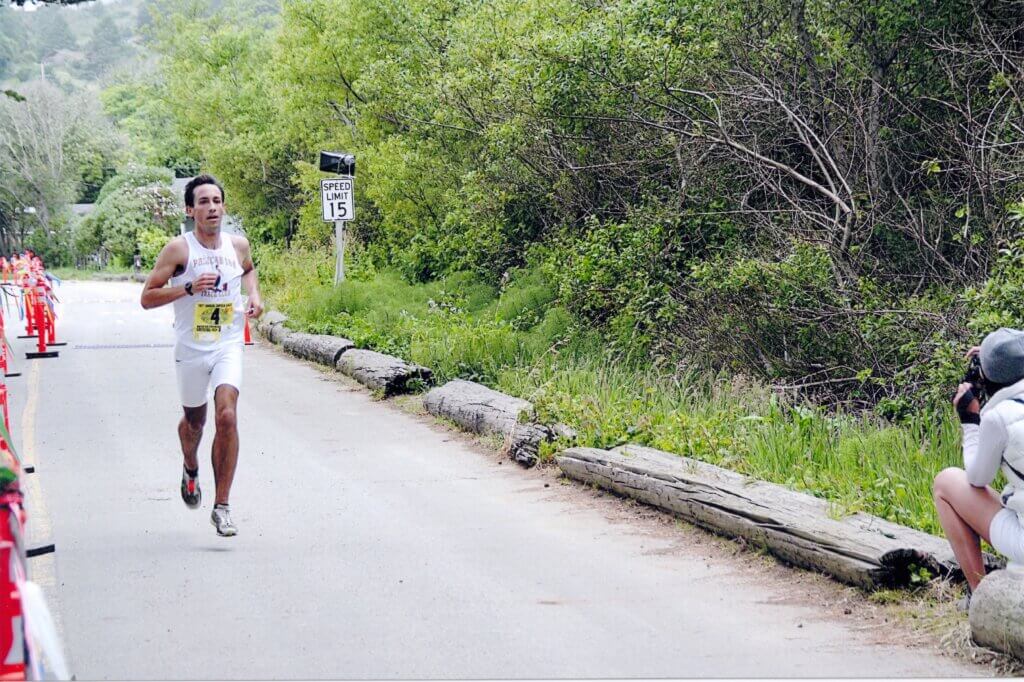
Kirsten: That brings me to another question which also came from Leo:
“If you end up with wet slippery wooden stairs and wet roots and if it ever rains in California again, what shoes would you recommend using for this?”
Alex: I have really liked to wear cross country flats for this race. I used to run for Nike and I loved their Streak, LT and XC series. I think any kind of lower profile, responsive trail shoe is a good choice. As far as traction is concerned, sticky rubber is good, but unfortunately I have not found anything that grips well on wet wood. While it doesn’t rain a lot in California, those stairs are in Steep Ravine and they’re surrounded by Redwoods. Despite not getting a lot of direct rain, they’re always wet.
In general, I really like having good ground feel from shoes, so I’ve tended towards more lower profile stuff when racing.
Kirsten: For someone who’s looking to be competitive at Dipsea, there’s a special problem, which is that the race really quickly funnels into a steep uphill, stair single track section and getting caught behind a ton of people will be bad news for a fast runner. What do you think is the best approach to take on the start of this race?
Alex: I usually get out faster than I probably should and try to get to the bottom of the stairs (less than a half mile in) as fast as I can. You can’t control the people in front of you, but you can catch a few stragglers from the groups in front.
It also puts a gap between you and the people in your group behind you and that’s something you can control. Even if the stairs are open, or relatively open, you shouldn’t go charging up them because it’ll kill your quads and chances are they won’t be open and you won’t even be able to run up them.
In this case, you’ll have a little bit of time to recover from that harder effort at the start.
Kirsten: Another interesting point that our ambassador, Leo, brought up was the fact that you can toe the line with the people who are the best at this race and for the other race distances (the Double and the Quad), you get to interact with the other runners multiple times throughout the race. Is that something you’ve experienced or think is cool?
Alex: That’s much more of a factor in the Double and the Quad because you’re going out and back and crossing paths with people. Those races are really fun, you see people at the front and back of the pack. The Double is staggered, but the Quad is not handicapped. For what it’s worth, I do have the course record at both the Double and the Quad.
It is fun because you typically see people you know out there and a lot of times folks on the trail will hear you coming and they will move aside, cheer for you, they’ll give you a little push.
So there is definitely interaction with people that you wouldn’t see in a normal race where everybody starts at the same time, because you’re just if you’re a faster person, you’re just off the front and that’s all you see whereas in this race, everybody else is in front of me, all the other people that I’m racing are already on the course.
Kirsten: The next question I have for you is from our co-founder, Max, he wonders about this system they use with age and handicap that seems pretty unique to this race, do you see that being replicated in any other races at all? Or do you think that would never work anywhere else?
Alex: I think it’s harder to do over longer races, especially trail just because terrain is so different and people manage terrain so differently.
The people who direct Dipsea have also been doing the handicapping system for a longer time, so there is a lot of race specific data and there is a lot of science behind it. I don’t think it is something that could be done at a big mountain race–it would be very hard to determine how much to handicap people by.
I think it’s a cool dynamic, but I think if it were really to catch on, it would have by now. If you’re concerned about winning, this might not be the race for you. The fun part of Dipsea is the fact that you don’t know how it’s going to play out
Kirsten: The last question I have for you is from Francesco Puppi, who currently runs for Nike, and he’s one of our coaches here at Vert.Run. His first one is:
“Without Dipsea, Pikes Peak, or Western States, the sport of trail running would probably be very different from how we know it today for the importance they’ve had in the sport’s development. Most people probably don’t seem to even realize that and it’s always difficult to create the connection between past and the present. What is your opinion on this?”
Alex: The fact that he lumps in Dipsea with those two other races is very flattering. Growing up eight miles away from the race and never having heard of it for the first 18 years of my life, I think that says a lot about the nature of it. It’s a very, very, hyper local event. I think we’re very lucky to have the longevity that it has and I think part of it is that rising tide lifts all boats.
The visibility of trail running in general and trail running becoming a bigger thing in the world has started to elevate these other shorter races, and Dipsea benefits from having its long history and its tagline of being the oldest race in the United States.
That certainly says something and that puts it in consideration, just from that standpoint. It is interesting to consider Western States, being a race that has been running for forty plus years, and Pikes Peak which is very iconic, prestigious and has a long tradition behind it in comparison to Dipsea.
I think that also speaks to the people who put on the races who strive to maintain a high quality event, and relevance. Although I will say, the Dipsea committee has very little interest in anything outside of the race, for example, they won’t accept sponsorships.
They’re very committed to keeping the event “pure”, at least whatever “pure” might be in their opinion. I think that trail running would be on a rising wave, so to speak, without these events, but certainly, it helps to be able to do a couple of races that are well established and have been around for a long time.
There are photos from the Dipsea back in 1925 and an entire book by Barry Spitz written on the history of the race. The Olympic Club, which is the oldest Athletic Club in the US, started the thing–it’s got very deep roots which have helped the race gain recognition in the trail running community.
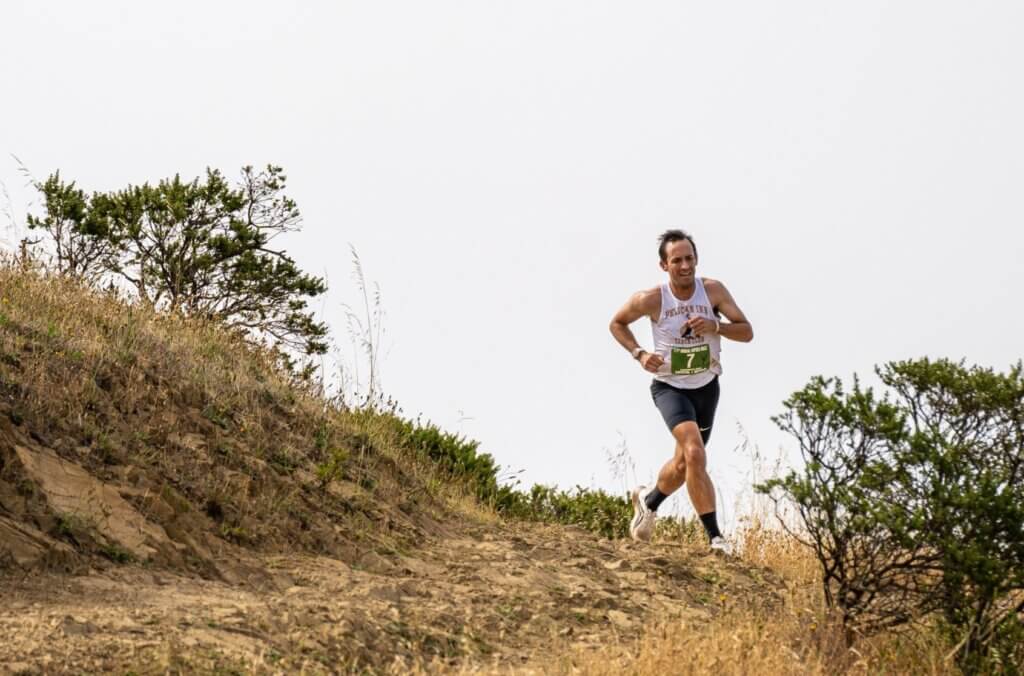
Kirsten: That’s really interesting to think about. Some of the French friends that I have, who are also involved in the trail community, will often make comments about wanting to go to the United States and see what the style of racing is like there. My response is always “what do you mean?”
But when you think about it, there is something nice about the vibe you are describing at Dipsea where there are no sponsors and a very unique handicap system created by this guy at MIT, and that attitude of “if you don’t like it, don’t come”.
Compared to races in Europe versus the US, there’s definitely a difference. There is something really cool about this simplicity of Dipsea and the idea of just going out and running.
So, that takes me to Francesco’s last question, which is:
“How important is it to preserve these historic events for the present and future of our sport?”
Alex: I think it’s super important. I can’t speak for Western States, or Pikes Peak, but I know the biggest battle that Dipsea faces is not demand–it’s permitting. I know Western States faced the same issues as well, with getting permits this year, plus they had fire on the course. Dipsea has been fairly lucky, as far as fires go, given the ecosystem surrounding the race location.
I do think it’s very important to preserve these historic events. I think the people running the races realize that and I don’t envy their position, because often they’re caught between a rock and a hard place, which is, do I compromise the history or the character of the race in order to make it happen this year? Dipsea is a good example of that with the shortcuts. It used to be a completely open course where you started in Mill Valley and finished at Stinson Beach and however you wanted to get there was allowed.
When I started running the race, it was still way more open. Now, you have to stay on the main trail most of the way because of the permitting agencies. It’s hard because they have to compromise the character and history of the race to allow it to occur. And so the question is, at a certain point, do you say it’s not worth it?
Kirsten: That’s really interesting. I personally have never really thought about how much of a struggle permitting might be for some of these events. It’s interesting to hear about it.
Alex: I know friends who put on local races like the Mount Tam hill climb, who didn’t know about the permits until a day before. Last year in 2021, the Rangers closed off a part of the course without telling the committee and this year, they didn’t tell them until a day before.
A lot of times their response is to keep runners and hikers on the trails–they might view a race as an event where people go off trail and trample things. It’s a difficult situation. I hope that all the people involved are able to come together, but it’s challenging on all sides.
Kirsten: The permits are there with a good intention and theoretically, anybody who’s running on the trails or running in the mountains or doing a race also wants to see the environment where that race is happening, preserved. I think, at the end of the day, everyone has the same goal.
It’s important to have that dialogue where you can understand and communicate about events in advance so everyone is on the same page. Our sport is growing, and our sport is growing fast–you can’t just 10x the number of runners who are in a race and expect the environment to look the same, it makes total sense.
It’s about finding a way, through the permitting element, to also educate people about why you have to do things a certain way and work together.


